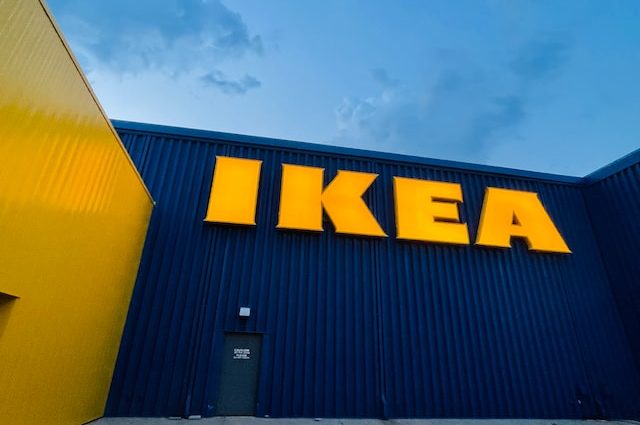Before we get into the specifics of IKEA, let’s understand competitor analysis. Competitor analysis is a strategic research method companies use to identify, evaluate, and understand their current and potential competitors within the market. It’s an essential business strategy component and instrumental in understanding the industry landscape.
The process usually involves the following steps:
- Identifying Key Competitors: The first step is to identify who your competitors are. These may be direct competitors (those who offer the same or similar products or services as you) or indirect competitors (those who provide different products or services but compete for the same consumer dollar).
- Analyzing Competitors’ Strategies and Objectives: Once competitors are identified, the next step is to understand their business strategies and objectives. This may involve analyzing their marketing materials, financial performance, customer reviews, or any public information available about the company.
- Assessing Competitors’ Strengths and Weaknesses: This step involves evaluating the identified competitors’ strengths and weaknesses. Strengths include unique products or services, strong brand recognition, and superior customer service. Weaknesses include poor product quality, weak customer service, or high prices.
- Understanding Competitors’ Products/Services: Understanding what your competitors offer and how your products or services compare is important. This could involve looking at features, quality, pricing, customer service, and marketing strategies.
- Observing Competitors’ Reaction Patterns: Some companies react more aggressively than others when faced with competition. Understanding these patterns lets you predict how these companies might respond to your business strategies.
- Drawing Conclusions and Formulating Strategy: The final step is to take all the information gathered from the analysis, draw meaningful conclusions, and use those to formulate or adjust your business strategies.
The main goal of a competitor analysis is to understand the competitive landscape, spot opportunities and threats, and position your company most advantageously. It helps to inform strategic decisions, from product development to marketing and sales efforts. Now, let’s do a competitor analysis of IKEA.
Here is the competitor analysis of IKEA
IKEA, known for its affordable and flat-pack furniture, faces competition from various companies across different markets. Here are some of its notable competitors:
Walmart
- Product Design and Range: IKEA is known for its modern, Scandinavian design aesthetic. Its products often appeal to customers looking for stylish, functional, and affordable furniture. While Walmart offers a wide range of products, including furniture, IKEA specializes in home furnishings and accessories, providing a more focused selection.
- Price Strategy: Both IKEA and Walmart emphasize affordability, but IKEA’s pricing strategy is closely tied to its design and flat-pack shipping methods, which reduce costs. IKEA’s prices are competitive, but the company also focuses on value and quality within its price range.
- Store Experience and Layout: IKEA stores are designed to provide a unique shopping experience with their showroom layout, allowing customers to visualize products in a home setting. This contrasts with Walmart’s more traditional retail layout. IKEA’s store experience often includes additional services like a restaurant and childcare, enhancing the shopping experience.
- Sustainability and Environmental Focus: IKEA strongly focuses on sustainability, with initiatives in renewable energy, sustainable sourcing, and eco-friendly materials. This commitment to sustainability can be a differentiating factor for environmentally conscious consumers.
- DIY Assembly and Flat-Pack Furniture: A key aspect of IKEA’s business model is its flat-pack furniture, designed for easy transport and customer assembly. This not only reduces costs but also appeals to a DIY market segment. Walmart’s furniture is typically pre-assembled or requires minimal assembly.
- Brand Identity and Marketing: IKEA has a strong global brand identity associated with stylish, affordable home solutions. Its marketing campaigns often highlight design, functionality, and the IKEA lifestyle, which is distinct from Walmart’s more general retail marketing.
- Global Presence: IKEA has a significant global presence, with stores in many countries worldwide. This international footprint diversifies its market and reduces dependence on any single market.
- Online Presence and E-commerce: Both companies have invested in their online platforms, but IKEA has been enhancing its e-commerce capabilities, including virtual room planning tools and online consultations, to compete in the digital space.
- Customer Demographic: While there’s overlap, IKEA often targets a slightly different demographic, including young adults, families, and those interested in modern design, compared to Walmart’s broader target market.
- Supply Chain and Inventory Management: IKEA’s supply chain is highly efficient, focusing on cost control and inventory management. This efficiency is key to maintaining low prices and a wide product range.
Wayfair
- Physical Stores and Showroom Experience: One of IKEA’s most significant competitive advantages is its network of large physical stores that double as showrooms. These stores allow customers to touch, feel, and visualize products in a real-life setting, something that’s not possible with Wayfair’s online-only model.
- Brand Recognition and Reputation: IKEA has established a solid global brand known for affordable, stylish, and functional furniture. Its reputation for Scandinavian design and innovative products draws in customers who seek this specific aesthetic and quality.
- Product Design and Range: IKEA is renowned for its modern, minimalist design and a wide range of home furnishing products. This focus on design-driven, functional furniture sets it apart from Wayfair, which offers a broader and more diverse range of styles from various suppliers.
- Pricing and Value Proposition: Both IKEA and Wayfair offer competitive pricing, but IKEA’s approach to design, manufacturing, and distribution allows it to maintain low costs and pass these savings on to customers. IKEA’s value proposition is not just about low prices but also about good design and quality for the price.
- Sustainability Initiatives: IKEA is firmly committed to sustainability, with initiatives in renewable energy, responsible sourcing, and environmentally friendly materials. This appeals to environmentally conscious consumers.
- DIY Assembly and Flat-Pack Shipping: IKEA’s furniture is designed for flat-pack shipping and self-assembly. This reduces costs and appeals to a market segment that enjoys DIY projects. It also reduces shipping costs, a significant factor for large furniture items.
- E-commerce and Digital Experience: While Wayfair is a leader in online furniture retail, IKEA has been enhancing its online presence, including developing a robust e-commerce platform, offering virtual room planning tools, and improving its online customer service.
- Global Supply Chain: IKEA’s well-developed global supply chain is a key strength. It allows for efficient production and distribution, helping to keep costs down and maintain a comprehensive inventory.
- Cultural Adaptation: IKEA adapts its products and marketing to suit local tastes and preferences in the various markets in which it operates, something that’s more challenging for a primarily online retailer like Wayfair.
- Customer Experience and Services: Beyond just selling products, IKEA offers a holistic shopping experience with additional services like in-store restaurants, childcare facilities, and home delivery and assembly services.
Home Depot
- Product Specialization and Range: IKEA specializes in affordable, stylish furniture and home accessories, offering a wide range of products specifically designed for home furnishing. While providing furniture and decor, Home Depot is more focused on home improvement and construction products.
- Design and Aesthetics: IKEA is known for its modern, Scandinavian design, appealing to customers seeking a contemporary and minimalist aesthetic. This design focus is a key differentiator from Home Depot’s broader product style range.
- Store Experience and Layout: IKEA stores are designed to offer a unique shopping experience, with room-like setups that help customers visualize products in a home setting. This contrasts with Home Depot’s warehouse-style layout, which focuses more on home improvement and construction materials.
- DIY Assembly and Flat-Pack Furniture: IKEA’s business model revolves around flat-pack furniture designed for self-assembly, reducing costs and facilitating more accessible transportation. This aspect is less emphasized at Home Depot, where furniture is often pre-assembled.
- Pricing Strategy: Both companies offer competitive pricing, but IKEA’s approach combines affordability with good design and functionality, making it attractive to budget-conscious consumers who also value aesthetics.
- Sustainability and Environmental Focus: IKEA is committed to sustainability, including efforts in renewable energy, sustainable sourcing, and eco-friendly materials. This focus can be a deciding factor for environmentally conscious shoppers.
- Global Brand and Market Presence: IKEA’s strong global brand and presence in numerous international markets give it a broad customer base and recognition different from Home Depot’s more North America-centric presence.
- Customer Experience and Services: IKEA enhances the customer experience with additional services like in-store restaurants, childcare, and detailed product displays. On the other hand, Home Depot focuses more on providing home improvement services and tools.
- E-commerce and Digital Experience: While both companies have robust online platforms, IKEA has increasingly enhanced its digital customer experience, including online room planning tools and e-commerce capabilities.
- Target Audience: IKEA typically targets individuals and families looking for affordable, stylish home furnishings. In contrast, Home Depot’s target audience includes homeowners seeking furniture and decor, professional contractors, and DIY enthusiasts focused on home improvement projects.
Target
- Specialization in Home Furnishings: IKEA specializes in furniture and home accessories, offering a wide and deep range of products specifically designed for home furnishing. This focus allows for a greater variety in styles and designs compared to Target, which offers a broader range of general merchandise.
- Design and Aesthetics: IKEA is renowned for its modern, Scandinavian design ethos, appealing to customers seeking contemporary, minimalist, and functional furniture. Target also offers stylish home decor and furnishings, but IKEA’s design-centric approach is a key differentiator.
- Affordable Pricing with Design Focus: Both companies emphasize affordability, but IKEA uniquely combines this with a strong design focus. IKEA’s products are affordable and designed, emphasizing aesthetics and functionality.
- Store Experience and Layout: IKEA stores offer a distinctive shopping experience with showrooms that display products so that customers can envision them in their homes. In-store amenities like restaurants and play areas complement this. While pleasant and well-organized, Target stores follow a more traditional retail format.
- DIY Assembly and Flat-Pack Shipping: A significant aspect of IKEA’s business model is its flat-pack furniture, designed for easy transport and customer assembly. Compared to Target’s mostly pre-assembled furniture, this approach is unique, allowing IKEA to keep costs lower.
- Sustainability and Environmental Initiatives: IKEA is firmly committed to sustainability, investing in renewable energy, sustainable sourcing, and eco-friendly materials. This commitment appeals to environmentally conscious consumers and differentiates it from Target.
- Global Presence and Brand Recognition: IKEA’s global brand and presence in numerous countries worldwide give it broad recognition and appeal. Target, primarily focused on the United States, has a more limited international footprint.
- E-commerce and Digital Shopping Experience: Both companies have invested in their online platforms, but IKEA has been enhancing its e-commerce capabilities, including virtual room planning tools and online consultations, to cater to a global audience.
- Product Innovation and Development: IKEA invests significantly in product development, often leading to innovative and unique furniture designs. This focus on innovation helps to keep its product offerings fresh and appealing.
- Target Audience: While there is overlap, IKEA often targets a demographic interested in modern design and affordable home solutions. Target appeals to a broader audience with its wide range of general merchandise.
Ashley Furniture HomeStore
- Design Philosophy: IKEA’s design philosophy is centered around modern, minimalist Scandinavian design. This aesthetic is consistent across their product range and appeals to customers looking for functional, stylish, and simple furniture. On the other hand, Ashley Furniture offers a broader range of styles, including traditional and contemporary designs.
- Pricing and Affordability: IKEA is well-known for its affordable pricing strategy. It achieves this through efficient manufacturing, flat-pack shipping, and customer self-assembly. Ashley Furniture also offers competitive pricing but generally targets a slightly different market segment, often focusing on higher-end furniture.
- DIY Assembly and Flat-Pack Model: A significant aspect of IKEA’s business model is its flat-pack furniture, which reduces shipping and storage costs and allows for easy transportation by customers. This contrasts with Ashley Furniture’s model, where most furniture is sold assembled.
- Sustainability and Environmental Commitment: IKEA is strongly committed to sustainability, with initiatives for renewable energy, sustainable sourcing, and eco-friendly materials. This focus appeals to environmentally conscious consumers and is a growing area of differentiation from traditional furniture retailers.
- Global Brand and Presence: IKEA has a significant global presence, with stores in many countries worldwide. This international footprint and brand recognition provide it with a broad market appeal. Ashley Furniture, while also having a significant presence, is more concentrated in North America.
- Store Experience and Layout: IKEA stores are known for their unique layout, offering a showroom experience that guides customers through various home settings. This immersive experience is different from the traditional furniture showroom model used by Ashley Furniture.
- E-commerce and Digital Presence: Both IKEA and Ashley Furniture have online shopping options. However, IKEA has been increasingly focusing on enhancing its digital customer experience, including offering online room planning tools and augmented reality apps.
- Product Range and Accessories: IKEA offers a wide range of home products, including furniture, kitchen appliances, home accessories, and even minor items like plants and kitchenware. This extensive range allows customers to find a variety of items for their homes beyond just furniture.
- Cultural Adaptation: IKEA adapts its products and marketing to suit local market tastes and preferences. This level of adaptation can be a competitive advantage in appealing to a diverse global customer base.
- Customer Services: IKEA offers various customer services like in-store restaurants, childcare facilities, home delivery, and assembly services, enhancing the overall shopping experience. Ashley Furniture focuses more on traditional customer service models within the furniture retail industry.
Lowe’s
- Focus on Home Furnishings: IKEA specializes in stylish, affordable furniture and home decor. This specialization contrasts with Lowe’s, which, while offering some furniture and decor, focuses more on home improvement, construction materials, and appliances.
- Design Aesthetic: IKEA is renowned for its modern, Scandinavian design, appealing to those seeking contemporary, minimalist, and functional furniture. Lowe’s offers a range of styles, focusing less on a specific design aesthetic and more on home improvement.
- Pricing and Value Proposition: Both companies offer competitive pricing. However, IKEA’s business model, featuring flat-pack furniture designed for self-assembly, allows it to maintain low costs and provide unique value in terms of design and functionality.
- Store Experience: IKEA stores are designed to offer a unique shopping experience, with room-like setups that help customers visualize products in a home setting. With its warehouse-style layout, Lowe’s caters more to the DIY and home improvement market.
- Sustainability Efforts: IKEA is strongly committed to sustainability, with various initiatives in renewable energy, sustainable sourcing, and environmentally friendly materials. This aspect may appeal more to environmentally conscious consumers than Lowe’s traditional retail approach.
- Global Brand Presence: IKEA’s strong global brand and presence in numerous countries give it a broad customer base and recognition. Lowe’s, though a significant player in North America, has a more limited international footprint.
- Product Range and Variety: IKEA offers a vast range of products specifically for home furnishing and decoration. It provides a one-stop shop for customers looking to furnish or decorate their homes. Lowe’s product range is broader regarding home improvement but less specialized in furniture and decor.
- E-commerce and Online Experience: Both companies have robust online platforms, but IKEA has been enhancing its digital customer experience, including virtual room planning tools and improved e-commerce capabilities, to cater to a global audience.
- DIY Assembly and Flat-Pack Shipping: IKEA’s furniture typically requires customer assembly and comes in flat-pack form, making it easy to transport and reducing shipping costs. Lowe’s furniture and decor items are usually pre-assembled or require minimal assembly.
- Customer Demographic: While there’s an overlap in the customer base, IKEA often targets individuals and families interested in affordable, stylish home solutions, whereas Lowe’s appeals more to a demographic engaged in home improvement and DIY projects.











